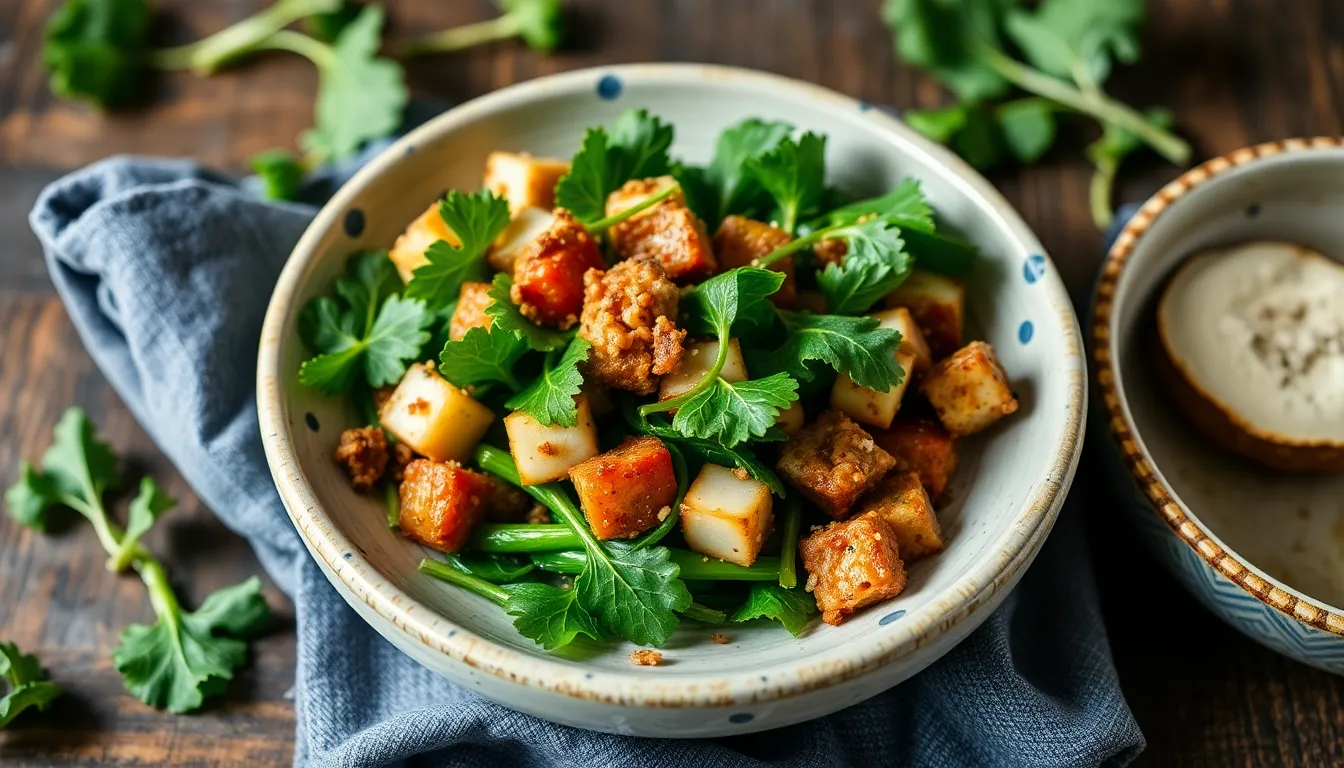How to Sauté Mixed Vegetables: A Quick and Easy Dish
Introduction
Sautéing is a versatile cooking technique that involves cooking food quickly in a small amount of oil or fat over relatively high heat. This method not only enhances the natural flavors of food but also preserves their essential nutrients, making it a popular choice for preparing vegetables.
Incorporating a variety of vegetables into your diet is vital for overall health. Vegetables are packed with vitamins, minerals, and fiber, which can help reduce the risk of chronic diseases, improve digestion, and maintain a healthy weight. Sautéing mixed vegetables is particularly beneficial as it is quick, easy, and allows for a flavorful dish that can complement a range of meals.
In this article, we will guide you through the process of sautéing mixed vegetables, providing you with tips, techniques, and serving suggestions to make your dish delightful and nutritious.
Ingredients
When it comes to sautéing mixed vegetables, the possibilities are endless. Here is a list of common vegetables you can use, along with some optional ingredients and suggested seasonings:
Common Vegetables for Sautéing
- Bell Peppers
- Zucchini
- Carrots
- Broccoli
- Snow Peas
- Mushrooms
- Spinach
Optional Ingredients
- Garlic (minced)
- Onion (sliced or chopped)
- Ginger (grated)
Suggested Seasoning Options
- Salt
- Pepper
- Herbs (e.g., basil, oregano, thyme)
- Spices (e.g., paprika, cumin)
HTML Table: Ingredients List
| Vegetable | Preparation |
|---|---|
| Bell Peppers | Chopped |
| Zucchini | Sliced |
| Carrots | Thinly sliced |
| Broccoli | Cut into florets |
| Garlic | Minced (optional) |
Equipment Needed
To sauté mixed vegetables, you will need the following equipment:
- Skillet or frying pan
- Spatula or wooden spoon
- Knife and cutting board
- Measuring cups and spoons (if needed)
Step-by-Step Instructions
1. Prepare the Vegetables
Start by washing your vegetables thoroughly under cold running water to remove any dirt or pesticides. Once cleaned, chop or slice them according to the preparation list. It’s important to cut the vegetables into uniform sizes to ensure even cooking.
2. Heat the Pan
Preheat your skillet over medium-high heat. It’s crucial to heat the pan sufficiently before adding the oil to ensure that the vegetables cook quickly and evenly.
3. Add Oil
Add about 1-2 tablespoons of oil to the preheated skillet. Good options include:
- Olive oil
- Vegetable oil
- Coconut oil
Let the oil heat for a few seconds before proceeding to the next step.
4. Sautéing the Vegetables
Start by adding the harder vegetables first, such as carrots and broccoli, as they require longer cooking times. Follow with softer vegetables like bell peppers and zucchini. Here’s a recommended order:
- Carrots (2-3 minutes)
- Broccoli (2-3 minutes)
- Bell Peppers (2 minutes)
- Zucchini (1-2 minutes)
Stir the vegetables frequently with a spatula or wooden spoon to ensure they cook evenly and do not stick to the pan. Remember that you want them to be tender but still crisp.
5. Seasoning
Season your vegetables with salt, pepper, and any herbs or spices you prefer towards the end of cooking. Fresh herbs like basil or parsley can be added just before serving for a burst of flavor.
Tips for Perfectly Sautéed Vegetables
- Avoid overcrowding the pan; cook in batches if necessary to allow steam to escape and to achieve a nice caramelization.
- Adjust the heat as needed to prevent burning; you can lower the heat if the vegetables are cooking too quickly.
- Using a lid for steaming can help cook the vegetables faster, but remove it once they are tender to evaporate excess moisture.
Serving Suggestions
Once your vegetables are sautéed to perfection, the possibilities for serving them are vast:
- Pairing with proteins: Serve alongside grilled chicken, shrimp, tofu, or your favorite plant-based protein.
- Best served over grains: Sautéed vegetables make a great topping for cooked rice, quinoa, or pasta.
- Presentation tips: Serve in a bright bowl to highlight the colors of the vegetables, and garnish with fresh herbs for an appealing look.
Conclusion
Sautéing mixed vegetables is a swift and healthy way to incorporate a variety of flavors and nutrients into your meals. This technique not only preserves the vibrant colors of the vegetables but also enhances their natural tastes, making them a delightful addition to any dish.
We encourage you to experiment with different combinations of vegetables and flavors, and don’t hesitate to share your sautéed vegetable creations on social media. Let your culinary creativity shine!
Additional Resources
For more tips and recipes, check out these related articles on our blog:




